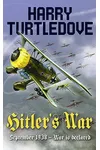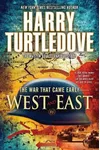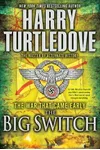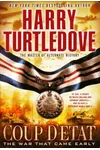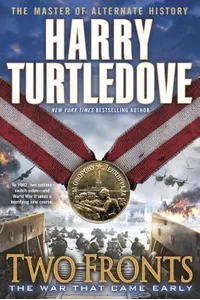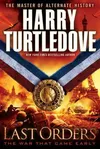Step into the gripping world of The War That Came Early, where history takes a daring twist and World War II ignites a year earlier! Harry Turtledove, the master of alternate history, crafts a thrilling six-novel saga that reimagines the global conflict through a kaleidoscope of characters—soldiers, civilians, and leaders—caught in a war that could have reshaped our world. With its blend of meticulous historical detail and bold 'what-if' scenarios, this series invites readers to ponder how fragile the threads of history truly are.
From a Czech sniper in Spain to a Jewish family navigating Nazi Germany, The War That Came Early weaves personal stories into a grand tapestry of a world at war. Ready to explore a World War II unlike any you’ve studied? Let’s dive in!
How The War That Came Early Began
In the late 2000s, Harry Turtledove, a historian with a Ph.D. in Byzantine history, set out to reimagine World War II’s timeline. Inspired by the pivotal Munich Conference of 1938, Turtledove wondered: what if British Prime Minister Neville Chamberlain had defied Hitler, sparking war over Czechoslovakia instead of Poland? This question birthed The War That Came Early, with its first novel, Hitler’s War, published in 2009. A second divergence—Spanish Nationalist leader José Sanjurjo surviving a plane crash—adds further complexity, aligning Spain with the Axis and setting the stage for a radically altered conflict.
Turtledove’s knack for blending historical accuracy with creative speculation shines here, drawing on his deep knowledge to craft a believable yet surprising alternate reality. His goal? To challenge readers’ assumptions about history’s inevitability.
The Heart of The War That Came Early
The series spans six books, each exploring the ripple effects of an early war. Hitler’s War (2009) kicks off with Hitler’s rash invasion of Czechoslovakia after the assassination of Konrad Henlein, a Sudeten German leader. West and East (2010) delves into Europe’s stalemates and Japan’s clashes in the Russian Far East. The Big Switch (2011) delivers a shocking twist as Britain and France, after Winston Churchill’s suspicious death, align with Germany against the Soviet Union. Coup d’Etat (2012) sees England and France reevaluate their alliances, while Two Fronts (2013) and Last Orders (2014) wrap up the saga with shifting allegiances and a devastating Japanese weapon.
Themes of choice, chance, and consequence run deep. Turtledove’s military-focused style, rich with gritty battlefield scenes, contrasts with intimate character moments—a German pilot’s forbidden romance, an American marine’s struggles in Japanese-occupied China. The series’ global scope, from Scandinavian fronts to Singapore’s streets, highlights World War II’s vast reach, while its alternate timeline questions the fragility of historical outcomes. Fans praise Turtledove’s ability to make history feel alive, though some note the challenge of tracking its sprawling cast.
Why The War That Came Early Resonates
The War That Came Early stands out in alternate history for its bold reimagining of a familiar conflict. By starting the war in 1938, Turtledove delays Hitler’s genocidal policies, offering a poignant lens on Jewish survival and resistance. The series has captivated history buffs and genre fans, earning praise for its historical depth and narrative ambition, with Kirkus Reviews lauding its 'grand scope.' While not as mainstream as Turtledove’s Worldwar series, it has a dedicated following on platforms like Goodreads, where readers debate its twists and historical plausibility.
Its legacy lies in challenging readers to rethink history’s 'what-ifs.' By blending real figures like Rudolf Hess with fictional voices, Turtledove crafts a narrative that feels both authentic and speculative, cementing his status as alternate history’s standard-bearer.
- Publication Years: 2009–2014
- Number of Books: 6
- Genre: Alternate History, Military Fiction
- Notable Award: Turtledove’s broader work won the Sidewise Award for Alternate History
Grab Hitler’s War and dive into The War That Came Early’s thrilling alternate World War II! Whether you’re a history nerd or a fan of epic sagas, Turtledove’s world of chance and conflict awaits.
